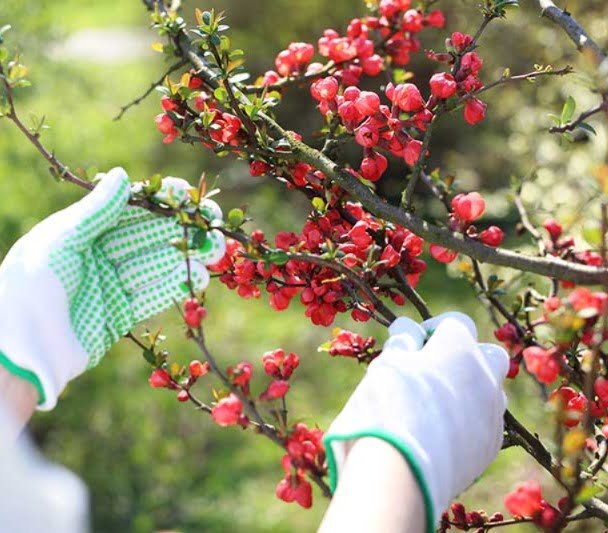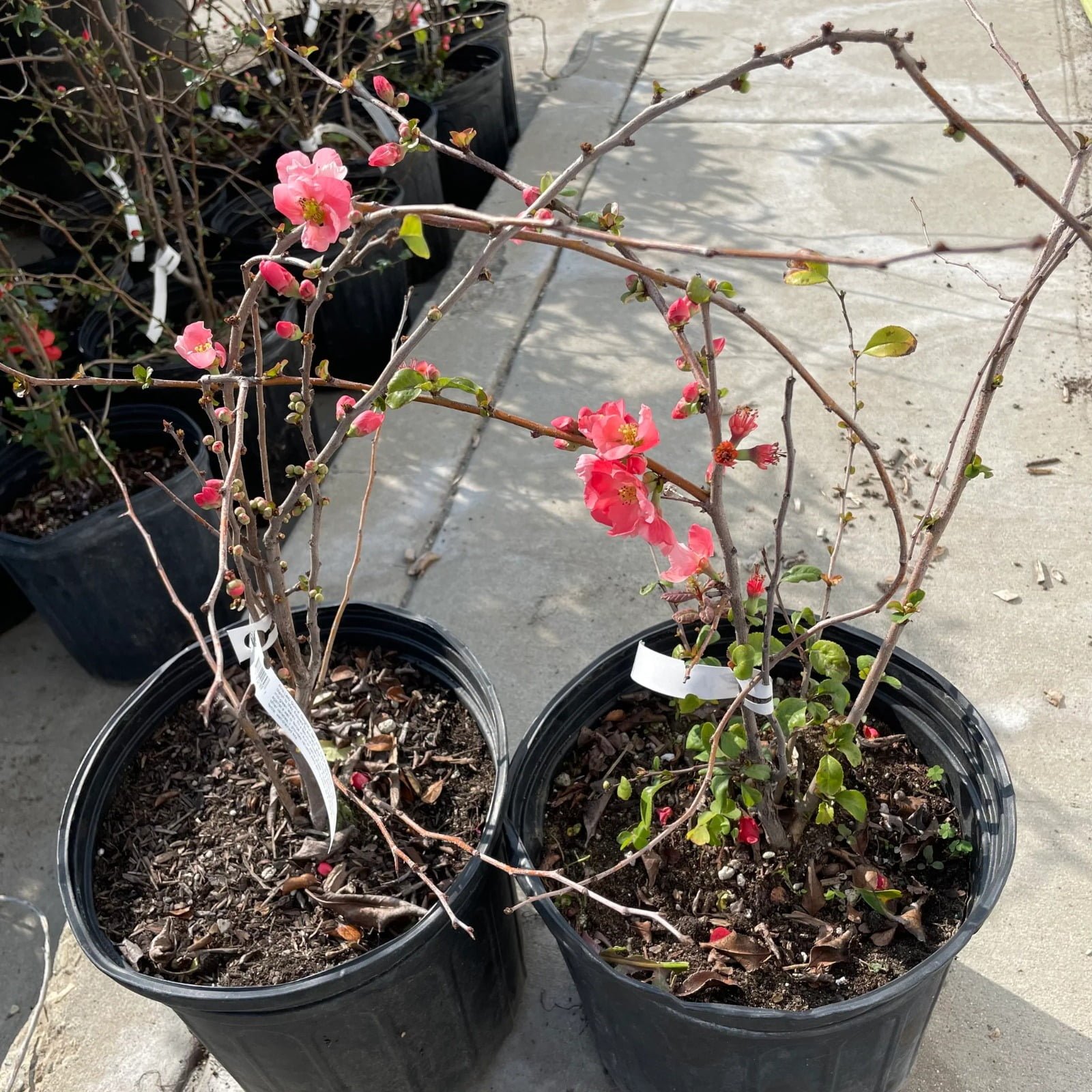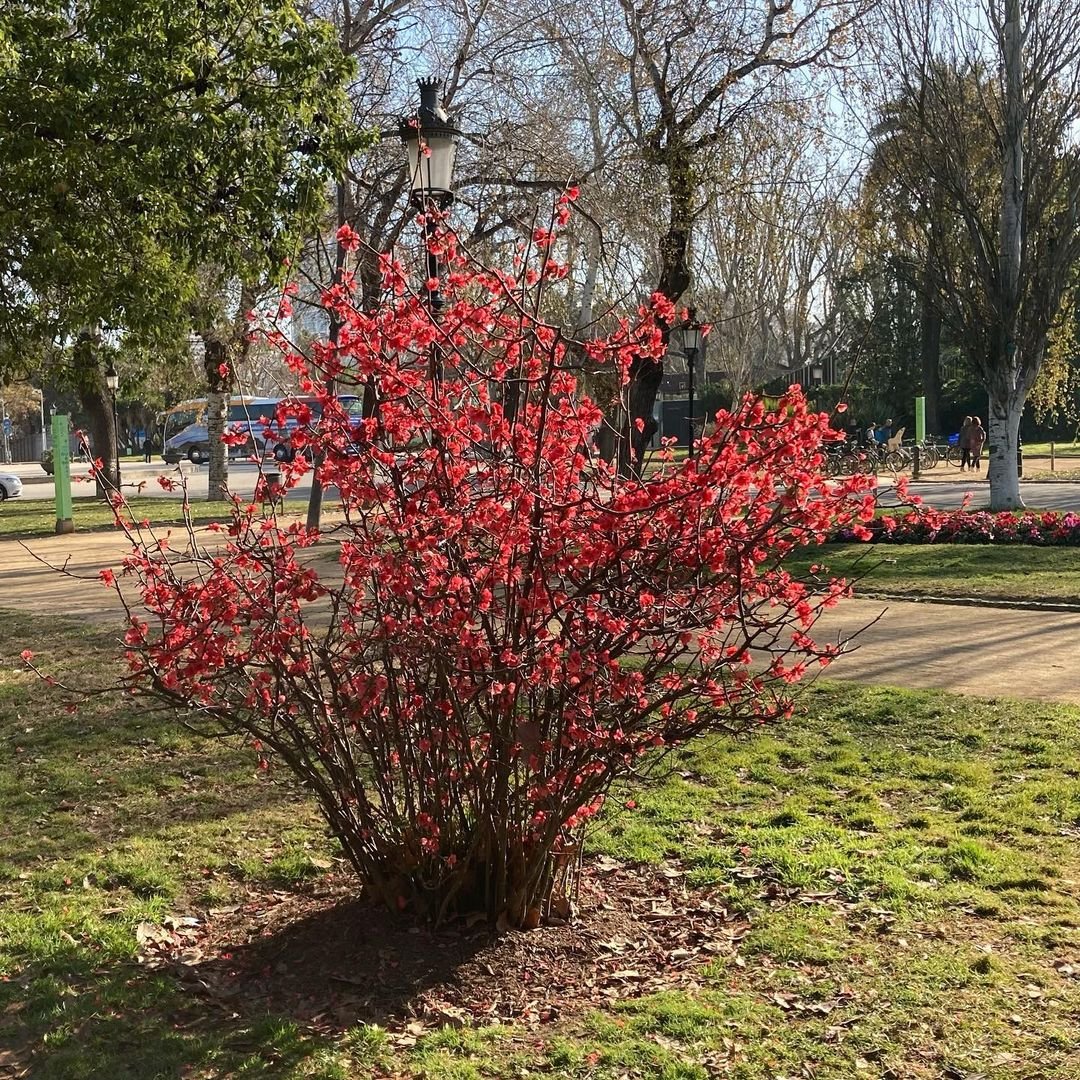Discover the ultimate guide to growing and caring for pink quince. Learn essential tips for planting, pruning and maintaining this beautiful shrub.
Pink quince is a stunning shrub that brings beauty to gardens with its lovely spring flowers and tasty fruit. This guide will teach you everything you need to know about growing and caring for pink quince. We’ll cover planting, pruning and maintenance to help your pink quince thrive.
Here’s a short information chart about Pink Quince (Chaenomeles speciosa):
| Aspect | Details |
|---|---|
| Botanical Name | Chaenomeles speciosa |
| Common Name | Pink Quince |
| Appearance | Deciduous shrub with pink flowers in spring |
| Leaf Shape | Oval, serrated |
| Plant Type | Shrub |
| Zones | 4-9 |
| Sun Exposure | Full sun to part shade |
| Soil Type | Well-drained |
| Watering | Regular; prefers moist soil |
| Fertilization | Fertilize in early spring with balanced fertilizer |
| Growth Habit | Upright, spreading |
| Height/Spread | 4-10 feet tall, 4-8 feet wide at maturity |
| Pests | Generally pest-free |
| Special Features | Edible fruit (quinces) after flowering |
What is Pink Quince?

Pink Quince (Chaenomeles speciosa) is a flowering shrub in the rose family. It’s native to parts of Asia but grows well in many other places. Pink quince is known for its:
- Beautiful pink flowers that bloom in early spring
- Thorny branches that make it good for hedges
- Small, hard fruits that can be used to make jams and jellies
Pink quince is different from the quince tree (Cydonia oblonga) that produces large, edible fruits. The pink quince we’re talking about is a shrub with smaller, harder fruits.
Why Grow Pink Quince?
There are many reasons to add pink quince to your garden:
- Early spring color: Pink quince flowers are among the first to bloom in spring.
- Tough and adaptable: It can grow in many soil types and climates.
- Attracts wildlife: The flowers bring in bees and butterflies.
- Useful fruits: Though not eaten raw, the fruits make great jams and jellies.
- Low maintenance: Once established, pink quince needs little care.
How to Plant Pink Quince

Choosing the Right Spot
Pink quince grows best in full sun to partial shade. It likes well-drained soil but can handle different soil types. Here’s what to consider:
- Sunlight: At least 6 hours of direct sun daily is best.
- Soil: Well-draining soil is important. Sandy or loamy soil works well.
- Space: Give each plant about 4-6 feet of space to grow.
When to Plant
The best time to plant pink quince is in fall or early spring. This gives the shrub time to establish roots before extreme weather hits.
Planting Steps
- Dig a hole twice as wide as the root ball and just as deep.
- Take the plant out of its container and loosen the roots gently.
- Place the plant in the hole, making sure it’s at the same depth as it was in the pot.
- Fill the hole with soil, pressing down gently to remove air pockets.
- Water deeply right after planting.
Caring for Pink Quince

Watering
Pink quince needs regular watering when young. Once established, it’s quite drought-tolerant. Here’s a watering guide:
- New plants: Water deeply once a week if there’s no rain.
- Established plants: Water during long dry spells, about once every 2-3 weeks.
Always water at the base of the plant to avoid wetting the leaves, which can lead to diseases.
Fertilizing
Pink quince doesn’t need much fertilizer. Too much can actually reduce flowering. If your soil is poor:
- Apply a balanced, slow-release fertilizer in early spring.
- Use a 10-10-10 fertilizer at half the recommended rate.
Pruning Pink Quince
Pruning is important for pink quince to keep it healthy and looking good. Here’s how to do it:
- When to prune: Right after flowering in late spring or early summer.
- What to remove:
- Dead, damaged or crossing branches
- Old, unproductive wood
- Suckers growing from the base
- Shaping: Cut back long branches to maintain the desired shape.
Always use clean, sharp pruning tools to avoid spreading diseases.
Learn more about pruning flowering shrubs
Pest and Disease Control

Pink quince is generally tough, but it can face some problems:
- Fire blight: This bacterial disease causes branches to look burned. Prune affected areas and avoid overhead watering.
- Scale insects: These tiny pests can be controlled with horticultural oil.
- Leaf spot: Fungal disease that causes spots on leaves. Improve air circulation and avoid wetting leaves.
Regular inspection and quick action can prevent most problems from getting serious.
Propagating Pink Quince

You can grow more pink quince plants by:
- Softwood cuttings: Take 4-6 inch cuttings in early summer and root them in moist potting soil.
- Layering: Bend a low branch to the ground, cover part of it with soil, and it will root over time.
- Seeds: Collect seeds from ripe fruits, but know that plants may not be exactly like the parent.
Learn more about plant propagation methods
Using Pink Quince in Your Landscape

Pink quince is versatile in the garden. Here are some ideas:
- Hedge: Plant several close together for a thorny, flowering hedge.
- Specimen plant: Use a single bush as a focal point in a mixed border.
- Slope stabilizer: Its roots help hold soil on banks or slopes.
- Wildlife garden: Plant it to attract and feed pollinators.
Pink Quince Varieties
There are several types of pink quince to choose from:
- ‘Pink Lady’: Has large, bright pink flowers.
- ‘Cameo’: Features double flowers in a soft pink shade.
- ‘Texas Scarlet’: Not truly pink, but has beautiful red-orange blooms.
Choose a variety that fits your garden’s color scheme and your local climate.
Harvesting and Using Quince Fruits
While not as large or sweet as tree quince fruits, pink quince fruits are still useful:
- Harvest when fruits turn yellow and feel firm (usually in fall).
- Use gloves when picking to avoid thorns.
- Cook fruits to make jams, jellies or add to apple pies for extra flavor.
Find quince recipes and uses here
Frequently Asked Questions
1. How fast does pink quince grow?
Pink quince is a moderate grower, adding about 1-2 feet per year until it reaches full size.
2. Is pink quince deer resistant?
Yes, its thorny branches and tough leaves make it unappealing to deer.
3. Can pink quince grow in containers?
Yes, choose a large pot (at least 18 inches wide) with good drainage.
4. How long does pink quince live?
With proper care, pink quince can live for 50 years or more.
5. Does pink quince need a pollinator?
No, pink quince is self-fertile, but having more than one plant can increase fruit production.
Growing pink quince can bring early spring color, useful fruits and wildlife to your garden. With the right planting spot and care, this tough shrub will thrive for years. Remember to give it enough sun, prune after flowering and watch for any pest or disease issues. Whether you’re looking for a flowering hedge a specimen plant or a source of fruit for jellies, pink quince is a great choice for many gardens.
By following this guide, you’ll be well on your way to enjoying the beauty and benefits of pink quince in your own landscape. Happy gardening!
Pingback: Cherry Blossom House: Design Ideas and Inspiration